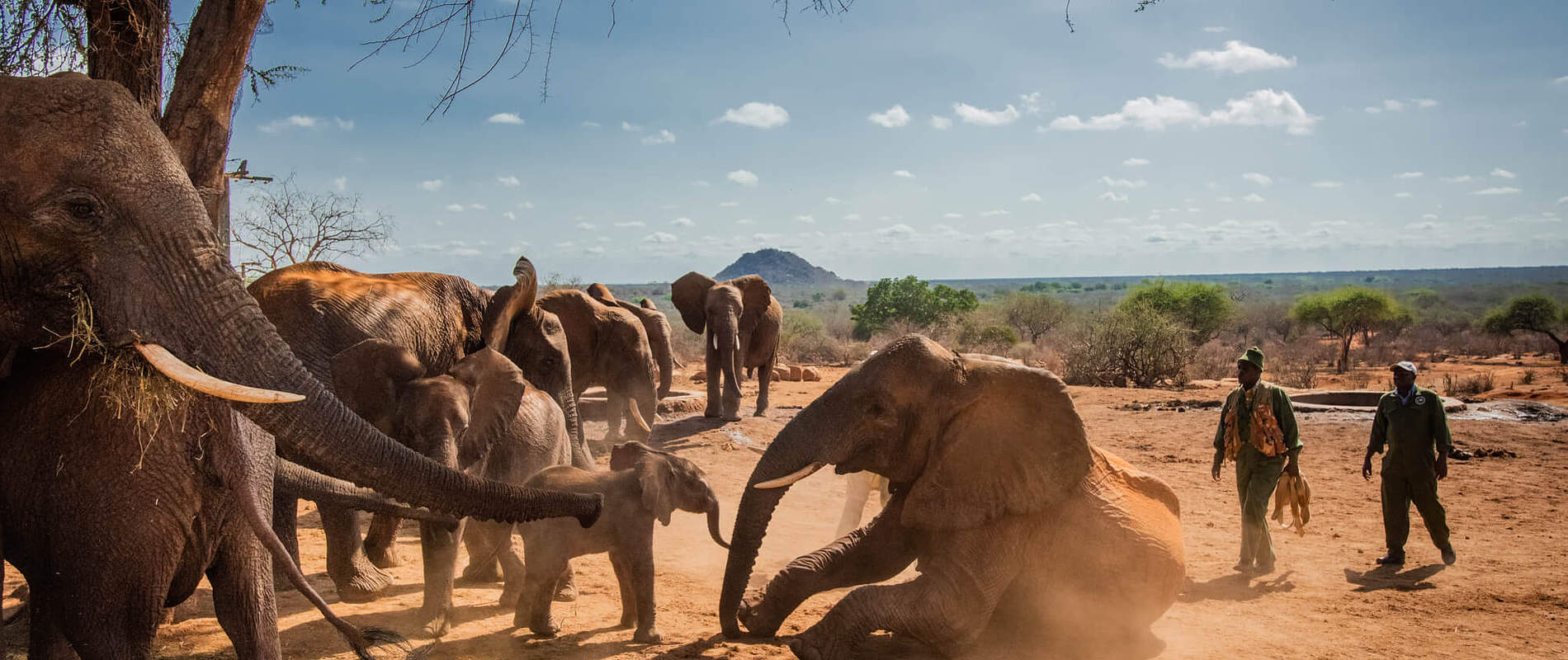Among all the remarkable stories that have unfolded around Ithumba in recent weeks, this one might take the cake. It is both a celebration of new life — and a reminder of the incredible intuition and empathy of elephants.
Before we begin this tale, we must first go back in time a bit. In a very short amount of time, Ithumba has been the scene of an extraordinary baby boom. On the 18th October, when Kinna gave birth to Kaia. From there, we were introduced to a new baby on a weekly basis: Naserian’s firstborn, Njema; Nasalot’s second son, Noah; Yatta’s third calf, Yogi; and finally Sunyei’s second daughter, Saba, who was born last week.
These babies were conceived during a glorious time, when Tsavo received years’ worth of rain over the course of a few months. After being nurtured within their mothers’ wombs for 22 months, they should have entered the world just as the rains broke — but sadly, that was not to be. Tsavo is still in the throes of a gruelling dry season, and we can only hope that respite is on the horizon. Given the challenging conditions, their mothers have prudently chosen to remain in the environs of Ithumba, where they knew they will find reliable sources of lucerne and water.
While they often branch off into smaller groups, Yatta is the undisputed matriarch of our ex orphan mums. Her decision to base her family around Ithumba undoubtedly influenced many others to remain there, too. In fact, on the morning of 20th November, 17 of the 19 wild babies born to Ithumba ex orphans were present, along with their mums and an assortment of other elephants. Only Sidai and her son, Sita, and Chyulu and her son, Cheka, were missing. This was not cause for concern, as Sidai and Chyulu have always been very independent elephants and don’t visit Ithumba on a regular basis. It had been nearly a year since we last saw both of them.
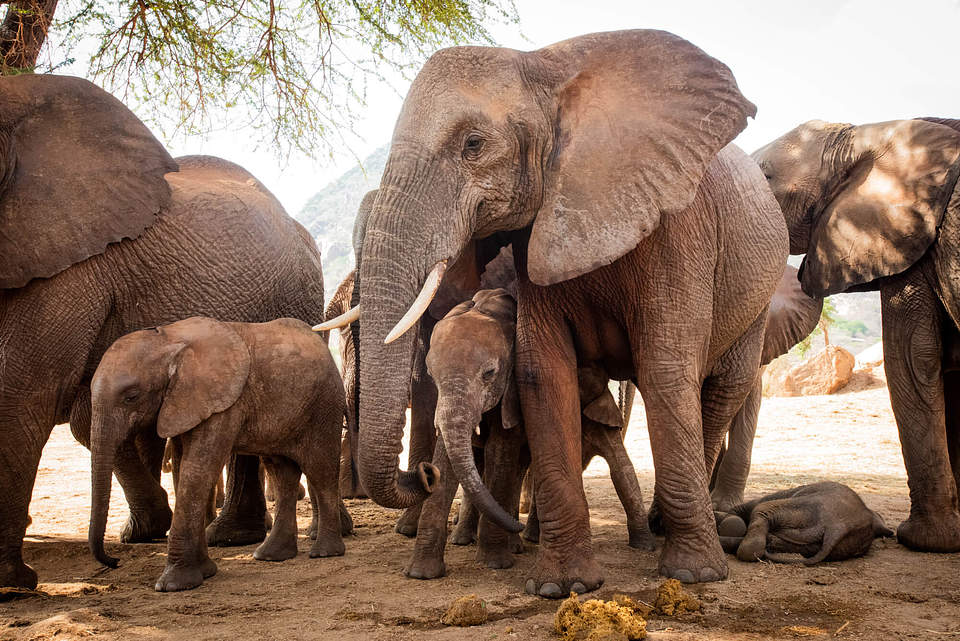
Sidai, Sita, and her newest addition, Silas
Later that day, everyone disappeared into the bush. Yatta must have told the group that it was time to move on. Perhaps she knows that rain is on the way, or some other motivation was driving her, but a mass exodus ensued.
So, we were pleasantly surprised to receive some unexpected guests at Ithumba just two days later. On the morning of 22nd November, the Keepers found Yatta, Chyulu, and Sidai waiting patiently outside the stockades. Their calves, Yetu, Yoyo, Yogi, Cheka, and Sita, were also in attendance — as was a tiny new addition! Sidai had given birth to a little boy, who was days old. We named him Silas.
The Keepers’ delight quickly turned into dismay, as they saw that Sidai had a very obvious arrow wound on her right rump. All of them looked quite gaunt, as if she had travelled a great distance in a short amount of time. We will never know exactly what unfolded, but we can surmise this: After Sidai was struck with an arrow, she and Chyulu decided to seek help at Ithumba. Yatta and co. must have encountered them en route. When Yatta digested the situation, she decided to leave her herd in the care of her capable deputies, so she could escort Sidai and Chyulu the rest of the way to Ithumba and ensure they arrived safely.
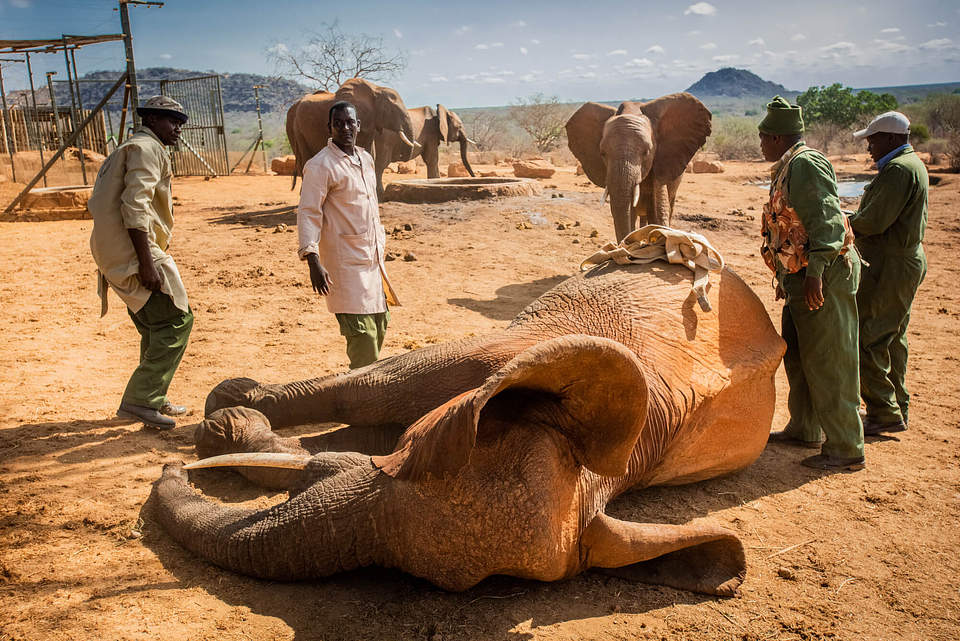
Our delight turned to dismay, as we realised that Sidai had an arrow wound
This must have unfolded along the Tiva River. An elephant with calves so young needs to be anchored to water, and because Sidai and her family hadn’t been at Ithumba, the Tiva is the next closest watering point. (Although “close” is a relative term; the Tiva is many, many miles from Ithumba.) After she was struck with an arrow, Sidai was faced with an impossible decision: Remain on the Tiva, where water was abundant but she ran the risk of succumbing to her poisoned wound, or embark on the long, drought-stricken trek to Ithumba, where she knew help would be waiting at the end. She clearly realised this was a life-or-death situation for her entire family, as Sita and Silas are both entirely reliant on her for their survival. And so, with her newborn and two-year-old by her side, she made the extraordinary journey back “home.”
The moment he caught sight of the arrow wound, Ithumba Head Keeper Benjamin raised the alarm. Our pilot flew straight to Voi to collect Dr Poghon, who leads the SWT/KWS Tsavo Mobile Vet Unit. By 9 o’clock, they were on the ground at Ithumba.
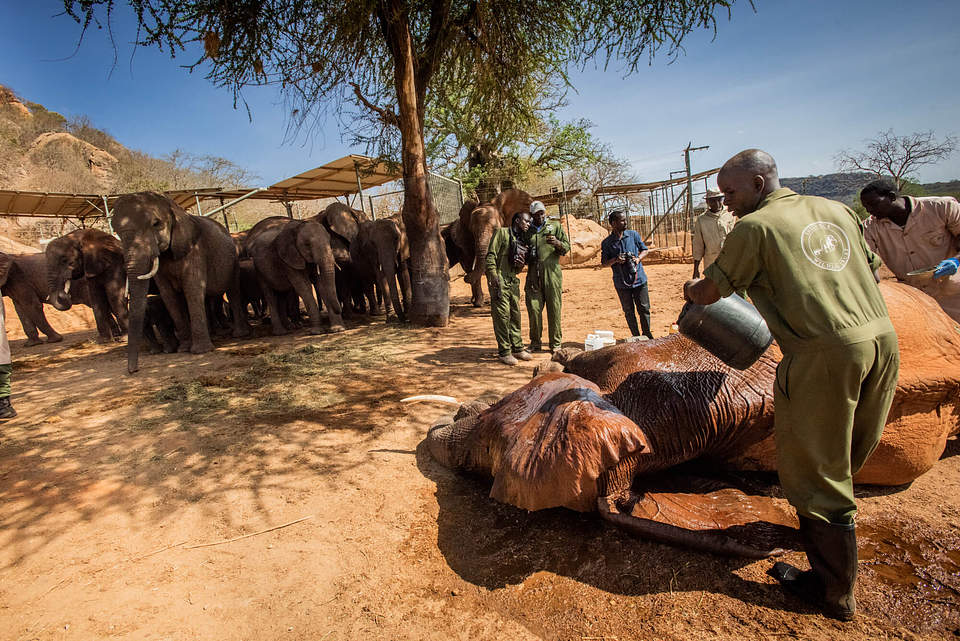
Incredibly, the other elephants showed no sign of concern as we treated Sidai, as if they realised we were there to help
Incredibly, this was the least dramatic part of the proceedings. There were no histrionics as Dr Poghon anaesthetised Sidai and commenced treatment; in fact, the other orphans were completely at ease. They seemed to have an understanding that their friend needed help and that we were there to provide it. Their top concern was caring for little Silas and Sita, almost as if they wanted to shield them from what was happening to their mum. Mwende, who is ex orphan Mulika’s daughter, showed up and took the lead on babysitting. She is ten years old — the eldest of our Ithumba wild-born babies — and has only ever known a wild life, yet she innately realised that our team was there to help Sidai.
The arrow was poisoned, but fortunately, the wound was still very fresh and the poison hadn’t had time to do its nefarious work. Dr Poghon removed the arrow and treated the wound with antibiotics, anti-inflammatories, and green clay. Once Sidai was fully revived and back on her feet, her friends deposited her calves back at her side. While she was clearly happy to be reunited with Sita and Silas, she showed no signs of distress about everything that had just unfolded.
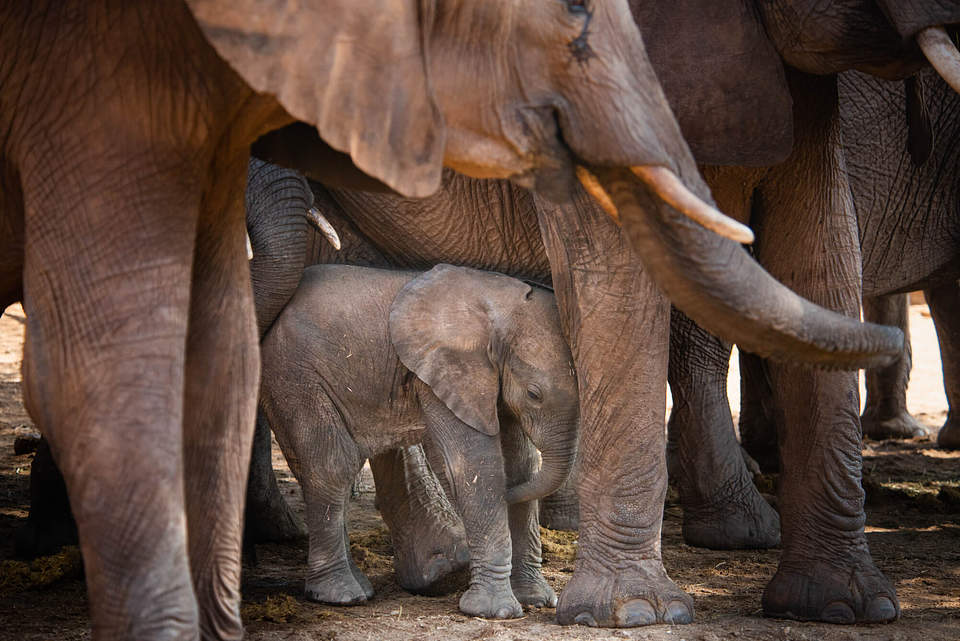
Soon, Sidai was back on her feet and reunited with Silas and Sita
Sidai spent the rest of the day relaxing around Ithumba, feasting on nutritious lucerne and feeding her own babies. She and Chyulu used their time at home to rest, giving their calves the opportunity to recharge as well. Within a few days, however, they felt ready to venture out again. However, they have continued to pop in over the following days, taking advantage of the ample resources to be found around Ithumba. It is such a comfort to know that an elephant like Sidai can lead the independent life she so clearly craves, but she always has a home to return to in times of need. And during this brief sojourn, what a privilege it was for us to meet little Silas — our 44th known wild-born baby and the 20th born to one of our Ithumba orphans!
